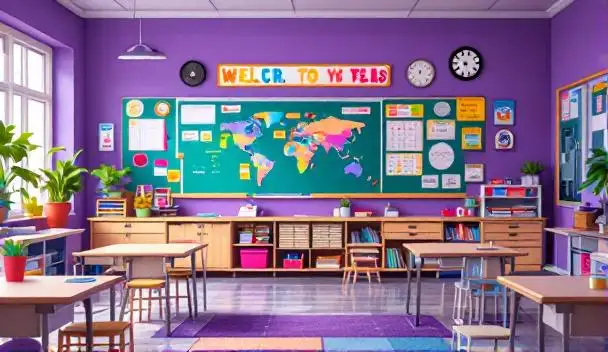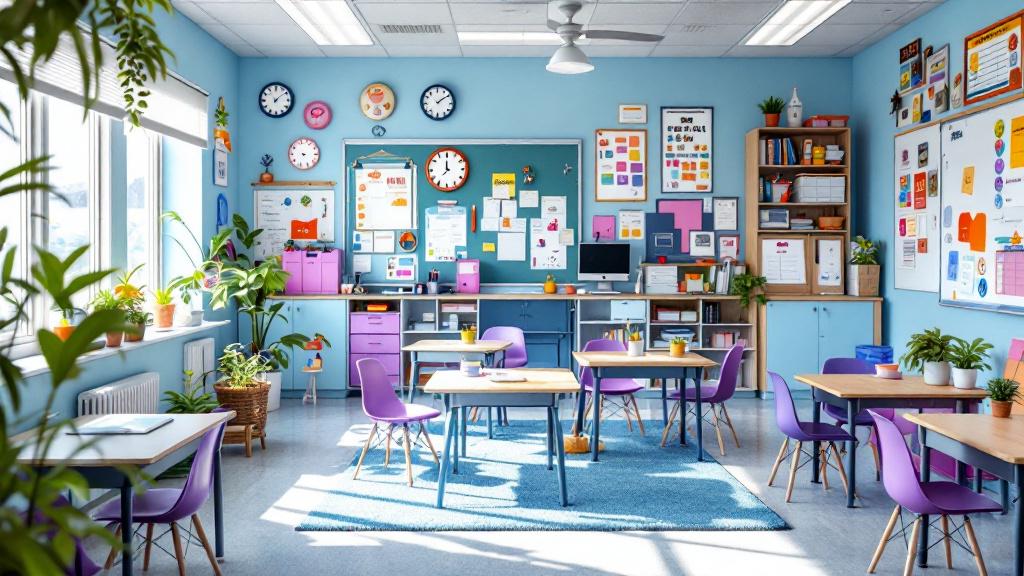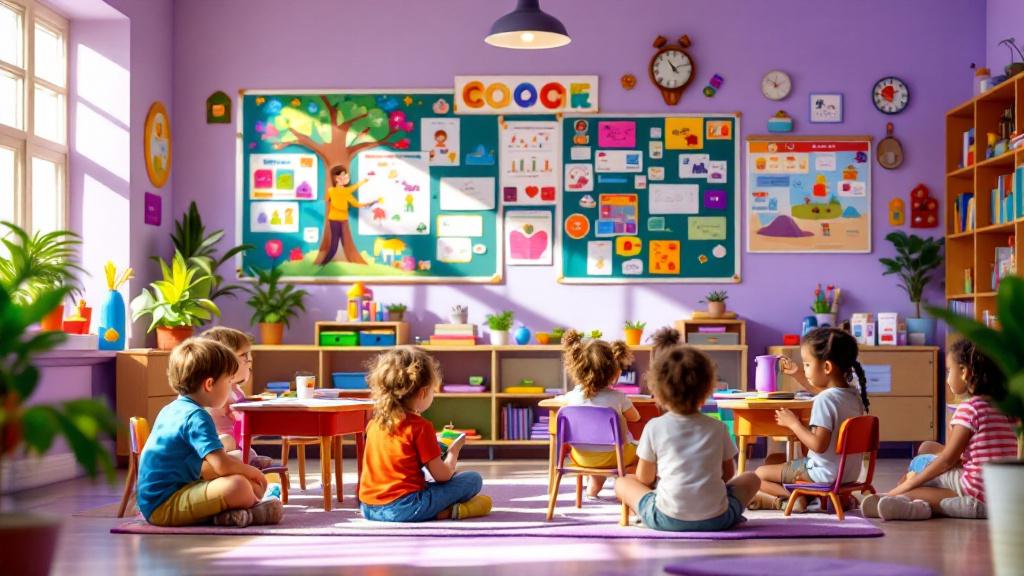The Power of Communication
Effective communication between parents and ABA therapists is fundamental to fostering growth and development for children undergoing Applied Behavior Analysis (ABA) therapy. Parents who engage actively in communication with therapists can enhance the therapeutic process and contribute to better outcomes for their children. Understanding roles, responsibilities, and strategies for communication is essential. This article provides insights and practical advice to help parents navigate interactions with ABA professionals, ensuring a collaborative and supportive environment for their child's success.
Creating a Collaborative Environment

Open and Honest Communication
Effective communication starts with openness. Parents should feel empowered to share their insights, concerns, and hopes regarding their child's ABA therapy. A supportive dynamic is established when parents express their preferences for communication frequency and style. Whether they wish for detailed updates or brief check-ins, clearly defined communication preferences help foster a collaborative atmosphere.
Establishing Clear Communication Channels
Clear communication channels are vital in the parent-therapist relationship. Whether through email, phone calls, or a shared log for tracking progress, these tools ensure that both parties stay informed and aligned. By using a structured communication log, parents can record observations, feedback, and significant milestones, thus creating a thorough record for further discussions. This eliminates misunderstandings and reinforces the collaborative aspect of therapy.
Regular Communication Schedules
Setting a routine for communication enhances the collaboration process. Regular meetings provide opportunities for both parents and therapists to share updates and adjust strategies in response to the child’s progress. This proactive approach ensures that goals remain aligned and relevant, maximizing the effectiveness of ABA therapy. Additionally, recognizing and celebrating small wins during these interactions can motivate both the child and the parents, strengthening the overall therapeutic partnership.
Empowering Parents Through Training

Why is parent training important in ABA?
Parent training is vital in ABA because it empowers parents to take an active role in their child’s therapy. By equipping them with the knowledge and tools required, parents can enhance their child's growth and foster independence.
One significant benefit of parent training is the generalization of skills. When parents learn effective strategies, children can apply what they learn not just in therapy, but across various settings such as home and community activities. This continuity supports skill retention and promotes adaptive behaviors in real-world situations.
Additionally, parent training ensures that behavioral interventions are consistent, which is crucial for success. Parents equipped with intervention techniques can reinforce positive behaviors in their child, contributing to an overall cohesive approach to therapy that includes both home and clinical environments.
Research highlights a connection between parent involvement and positive outcomes for children. Parents who are engaged in training report reduced challenging behaviors and enhanced communication skills in their children. Moreover, actively participating in their child's therapy can alleviate parental stress and strengthen family dynamics, contributing to a more enriching environment for all members.
Overall, parent training is a cornerstone of Applied Behavior Analysis, enhancing the effectiveness of therapy and improving the quality of life for both children and their families.
Tools for Parental Guidance

What is an ABA parent training checklist?
An ABA parent training checklist is a structured guide for parents and behavior analysts aimed at implementing Applied Behavior Analysis (ABA) strategies effectively at home. This tool emphasizes the importance of building rapport with caregivers and educating them on fundamental ABA principles, particularly the Antecedents, Behaviors, and Consequences (ABCs).
The checklist includes several key components to enhance the collaboration between parents and therapists, such as:
- Setting Clear Treatment Goals: This involves defining specific, measurable objectives to focus on during therapy.
- Reviewing Progress: Regular check-ins help track a child’s developments and adjust strategies accordingly.
- Behavioral Skills Training Methods: Tools and techniques to help parents confidently apply ABA strategies in real-life scenarios.
Additionally, the checklist acknowledges challenges like clinician jargon and time constraints, promoting achievable goals aligned with family values. This parent-centered approach empowers them to effectively contribute to their child’s development.
Learning from the Experts

How can parents learn ABA therapy strategies?
Parents can enhance their understanding of ABA therapy strategies through specialized training programs that focus on family engagement in managing their child’s behavior and development. These programs are designed to empower parents with the necessary skills and knowledge to implement effective techniques at home.
Among the core topics offered are:
- Imitation: Teaching parents how to encourage their child to imitate behaviors, which is fundamental for learning.
- Joint Attention: Strategies that foster engagement and shared focus between parents and children to improve communication.
- Naturalistic Teaching Strategies: Practical applications that integrate learning into everyday activities, making the process enjoyable for children.
Parent coaching sessions play a pivotal role in enhancing communication with therapists. This collaborative approach helps develop personalized strategies that align with each family’s unique values and goals. Furthermore, these programs also advocate for practical activities, such as practicing eye contact or recognizing emotions, that parents can seamlessly weave into their routines.
Many resources are available online, ranging from free courses to certification programs, enabling parents to learn at their own pace and acquire crucial knowledge and skills in ABA methods.
Simplifying ABA for Parents
How do ABA therapists explain ABA therapy to parents?
ABA therapists communicate the essentials of ABA therapy to parents by using straightforward language, steering clear of technical jargon that could confuse them. They focus on the therapy's foundation: improving behaviors and teaching new skills through positive reinforcement, which is crucial for fostering a child’s development.
Therapists often explain that the approach is tailored specifically to each child's needs, emphasizing that every child undergoes a thorough assessment to create a personalized treatment plan. They also stress that progress is monitored through data-driven methods, giving parents clear insight into how strategies are working.
Active parental involvement is championed within these conversations. Therapists inform parents that their engagement can substantially enhance their child's growth by consistently reinforcing positive behaviors and collaborating closely on therapeutic strategies. Parents are encouraged to set specific, measurable goals and maintain open communication to align their efforts with the therapist’s guidance.
How does parental involvement impact therapy?
Parental involvement significantly affects the success of ABA therapy. When parents actively participate, they provide essential insights into their child's behaviors at home, which helps tailor interventions more effectively. Collaborative goal-setting between parents and therapists not only aligns objectives but empowers parents to take ownership of the therapeutic process.
Creating a structured and supportive environment at home facilitates the generalization of skills learned in therapy. By celebrating small wins together, trust is built between parents and therapists, enhancing cooperation and ensuring that therapeutic strategies are consistently applied. Furthermore, this ongoing partnership cultivates emotional support, motivating children to remain engaged and optimistic about their progress in ABA therapy.
| Topic | Summary | Importance |
|---|---|---|
| Avoiding technical jargon | Use clear, everyday language to explain therapy concepts | Enhances understanding and empowers parents |
| Parental involvement | Active participation fosters collaboration and personalized strategies | Boosts therapy effectiveness and supports child development |
Goals of Parent Training
What are the goals of parent training in ABA?
The goals of parent training in Applied Behavior Analysis (ABA) focus on enhancing parents' skills to effectively support their children's development and behavior management. One primary objective is to improve communication between parents and their children, which can be facilitated through tools such as a child's communication book. This helps ensure that parents can effectively convey messages and instructions, reinforcing learning at home.
Key aspects of parent training also include establishing SMART goals—Specific, Measurable, Achievable, Relevant, and Time-bound. These goals align with family values and contexts, ensuring that they are realistic for the parents and the child involved. For example, parents might set a goal of improving their child's social interactions by practicing greeting and conversational prompts during family gatherings.
Additionally, effective training emphasizes behavior management strategies, such as using positive reinforcement to encourage desired behaviors and implementing extinction procedures for challenging behaviors.
With these objectives in mind, parent training empowers families to actively engage in their child's ABA therapy, significantly contributing to positive outcomes and reducing stress.
Implementing Behavioral Management
Implementing effective behavioral management strategies is vital for supporting children in ABA therapy. Parents are trained to recognize the importance of using positive reinforcement—a technique that nurtures desired behaviors by providing rewards or praise when these behaviors occur. This not only motivates the child but also strengthens the parent-child bond.
Moreover, skillful implementation of behavioral strategies involves recognizing when to apply extinction procedures for challenging behaviors, effectively minimizing disruptive responses while fostering alternative positive behaviors. By aligning their behavioral management techniques with those of the ABA therapist, parents help create a consistent environment that supports their child's learning.
Through structured training that encompasses these goals and strategies, parents become essential partners in the therapeutic process, enhancing the overall effectiveness of ABA and promoting a collaborative atmosphere necessary for their child's growth.
The Community Advantage

How does group parent training work in ABA?
Group parent training in ABA (Applied Behavior Analysis) is designed to create a supportive community among caregivers of children participating in social skills groups. This structured program provides a platform for parents to share their experiences and learn from one another.
Typically, the training consists of monthly 90-minute sessions spread over three months. Each session focuses on various themes, such as sleep, eating, and social skills, tailored to the specific needs of the caregivers. The emphasis is on practical theory combined with interaction and participation, empowering parents to develop skills that enhance their child's functioning while also alleviating stress.
Research shows that effective parent training significantly reduces challenging behaviors in children and improves positive parenting skills. The role of behavior analysts is vital in this process, as they guide the collaborative approach that benefits both child development and overall family quality of life.
The collaborative nature of group training
Collaboration is at the core of group parent training. By bringing together parents facing similar challenges, the training fosters a sense of community and shared understanding. Participants often find comfort in knowing they are not alone in their experiences.
This collaborative nature also enhances learning. Parents can exchange strategies that have worked for them in implementing ABA principles at home. Group discussions provide valuable feedback and diverse perspectives, allowing for a deeper understanding of the children's needs and effective responses.
In essence, group parent training in ABA not only equips caregivers with essential skills for better supporting their children but also strengthens the support network among families, making the journey less isolating and more collaborative.
Strengthening Family Roles in ABA
What is the role of caregivers in applying ABA strategies?
The role of caregivers is pivotal in the successful application of ABA strategies for children. Caregivers provide direct support in everyday settings, implementing the techniques learned during therapy sessions, which enhances consistency and reinforces positive behavior.
Quality training is essential, allowing caregivers to gain a comprehensive understanding of ABA principles tailored to their family’s unique needs. This training aims to empower them to apply strategies effectively at home, ensuring alignment with therapies provided by BCBAs.
Moreover, individualized training sessions can help caregivers address specific challenges, such as managing behaviors in different environments or recognizing progress. This systematic approach not only reduces caregiver stress but also fosters teamwork between caregivers and behavior analysts, creating a collaborative environment tailored to each child’s needs.
Ultimately, when caregivers are equipped with the knowledge and strategies to apply ABA principles at home, it leads to improved family dynamics and more successful outcomes in ABA therapy. Regularly celebrating small achievements together strengthens the bond between caregivers and children, reinvigorating their motivation and engagement in the therapeutic process.
Fostering Growth Through Communication
The journey of supporting a child through ABA therapy is enriched when parents and therapists maintain open, respectful, and collaborative communication. By actively engaging with therapy teams, parents not only advocate effectively for their child but also empower themselves with skills and knowledge that complement the therapeutic process. Understanding each stakeholder's role, setting practical goals, and maintaining clear channels for dialogue ensures that the child's growth and development takes center stage. This partnership lays the groundwork for significant, lasting progress, translating the efforts of therapy into real-world successes for the child and the family.
References
- Working with Parents As a BCBA - How to ABA
- Tips Effective Parent-Teacher Communication During ABA Therapy
- The Art of Talking to Parents in ABA: Tips and Best Practices
- Collaborating with ABA Therapists: How Parents Can Support...
- Strong and Effective Relationships with Parents and Therapists
- Effective Communication Strategies for Parents and Therapists in ...
- The Role of Family in ABA Therapy: Tips for Parents
- ABA Service Models: Guiding Parents, Enhancing Communication
- How to Talk to Parents in ABA: Effective Communication Tips





































































































